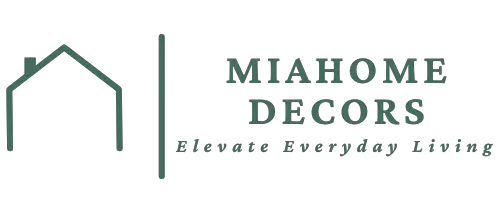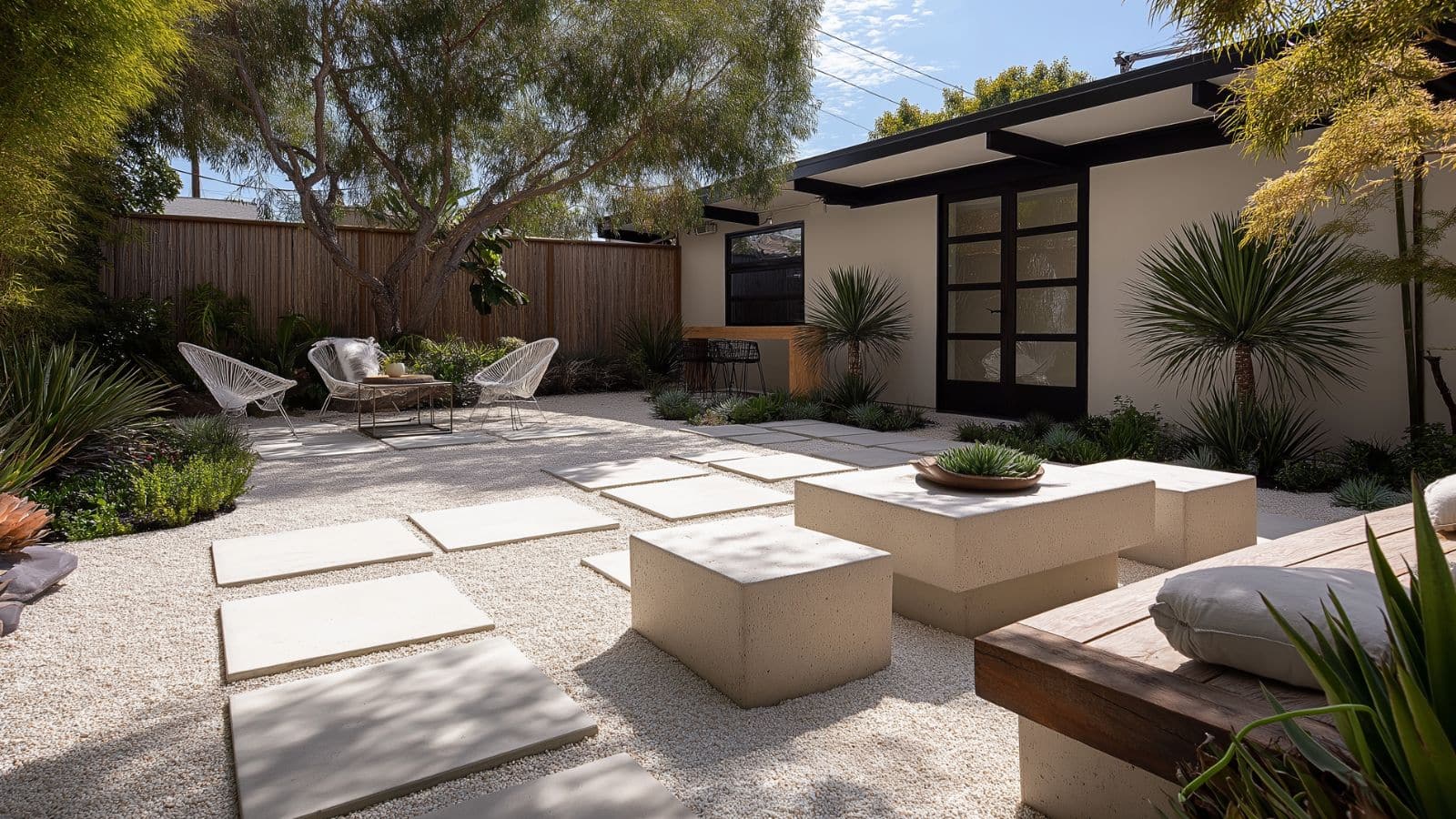10 DIY Concrete Slab Ideas for Stylish Outdoor Spaces That Blend Beauty and Function
Table of Contents
Concrete may sound industrial, but in the world of modern outdoor design, it’s become a canvas for creativity. From sleek patios to eye-catching walkways, concrete slabs are no longer just about practicality—they’re about personality. And best of all, many concrete slab projects are surprisingly simple to DIY.
In fact, according to home improvement studies, concrete is one of the most cost-effective materials for boosting outdoor livability and resale value. Whether you’re aiming to refresh your backyard, add structure to your garden, or build a space for lounging and entertaining, concrete can rise to the challenge—and do so with style.
This post will walk you through 10 creative DIY concrete slab ideas that can dramatically enhance your outdoor space. We’ll cover projects ranging from geometric paver patios to minimalist firepit surrounds and even statement-making stepping stone paths. Each idea includes practical tips, project insights, and design details to help you execute your vision on a budget.
So if you’re ready to give your yard a fresh, functional makeover, read on to discover the best ways to turn simple concrete into outdoor style magic.
Create a Geometric Concrete Paver Patio
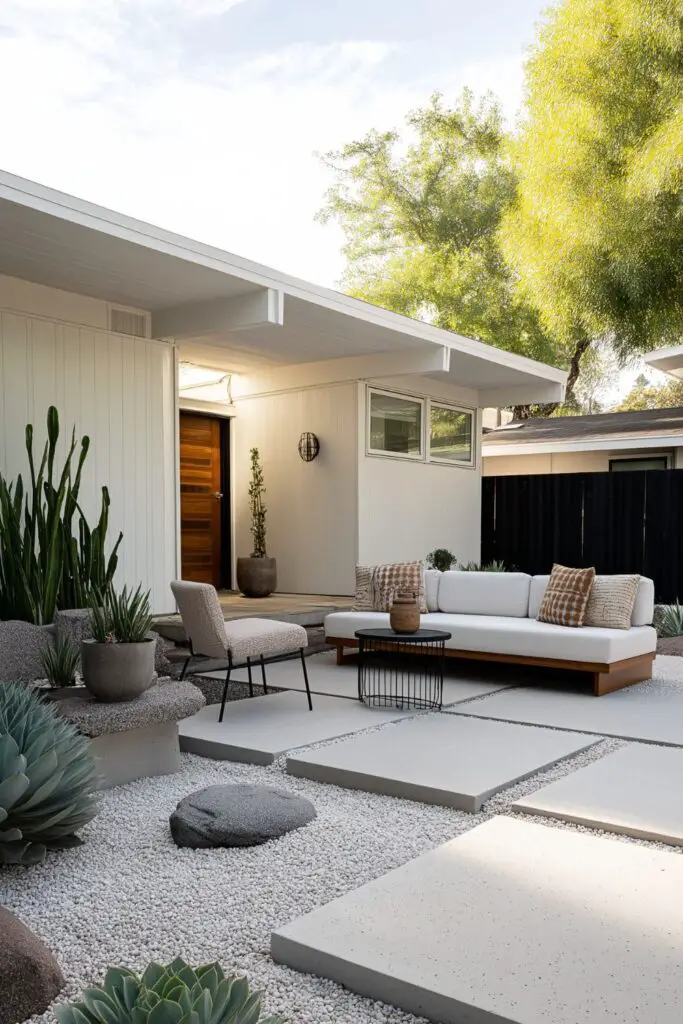
One of the most popular DIY trends in outdoor decor is the geometric concrete paver patio. Rather than pouring a single large slab, this design uses spaced-out rectangular or square slabs, often set in gravel or grass, to create a modern, graphic look.
To build this, start by mapping out your layout with string and stakes. Pour individual concrete forms using reusable molds or wooden frames. Allow room between each paver for decorative fill material like river rocks, mulch, or turf. This method offers flexibility and makes future repairs easier.
Not only is this approach visually appealing, but it also allows water to drain naturally through the gaps—making it both stylish and sustainable.
Project Overview: Geometric Paver Patio
| Step | Description |
|---|---|
| 1 | Create forms for square or rectangular concrete slabs |
| 2 | Pour and smooth concrete in each form |
| 3 | Cure slabs for at least 24–48 hours |
| 4 | Arrange slabs with equal spacing over prepared ground |
| 5 | Fill gaps with gravel, grass, or decorative stone |
This pattern works beautifully in modern, mid-century, or minimalist landscapes.
Design a Concrete Slab Walkway with Stepping Stones
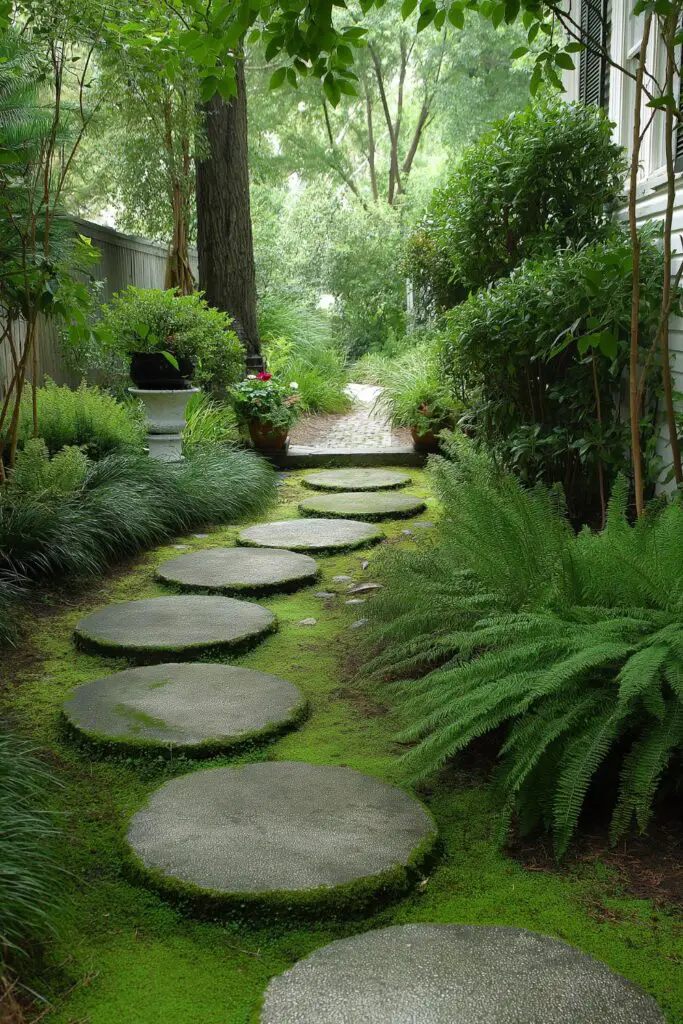
A concrete stepping stone path is a timeless addition to gardens, side yards, or front entries. It’s also incredibly customizable, with options for round, square, or irregular-shaped slabs.
You can create your own molds using scrap wood or buy pre-shaped forms from home improvement stores. Mix and pour the concrete, allow it to set, then lay the stones over a leveled base. Use sand or soil to keep them stable, and add ground cover like moss or creeping thyme between stones for added charm.
This project adds visual rhythm and practical access to otherwise unused areas of your yard.
Stepping Stone Walkway Elements
| Element | Details |
|---|---|
| Shape | Circular, square, or organic |
| Base | Compact gravel and sand mix |
| Spacing | Even gaps for stride and visual flow |
| Finish | Smooth, brushed, or textured surface |
| Edging | Optional border with bricks or mulch |
It’s an approachable DIY project that instantly adds charm and structure to your landscape.
Pour a Sleek Concrete Slab for an Outdoor Dining Area
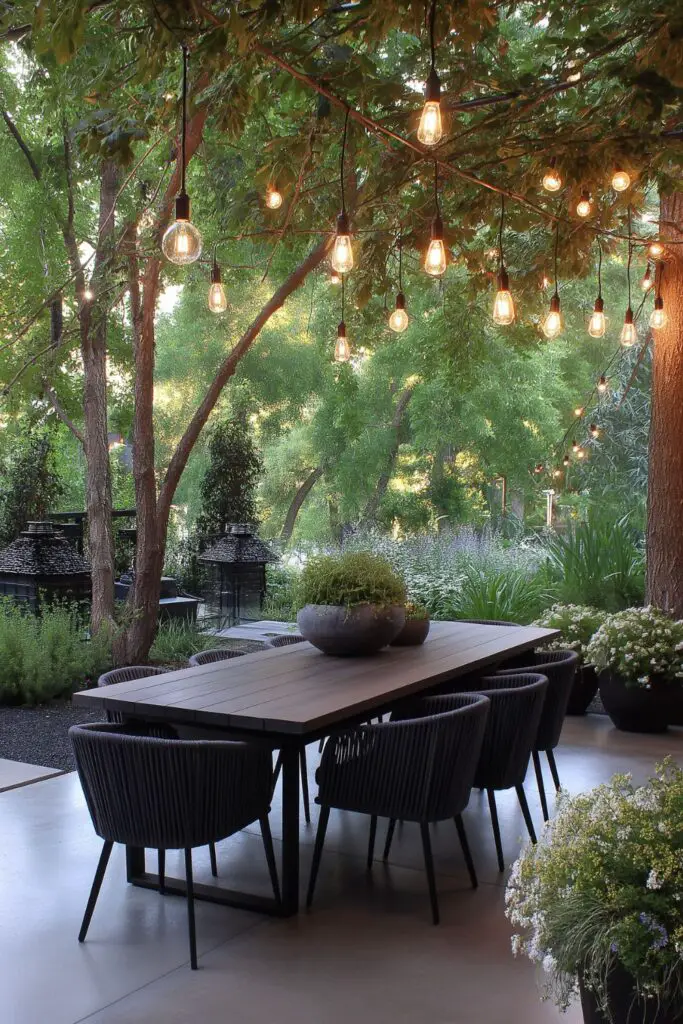
If you’re looking to create an outdoor dining or entertainment area, a full-sized concrete slab patio offers the perfect foundation. It’s sturdy, low-maintenance, and serves as a durable base for furniture, grills, and even pergolas.
To build this, you’ll need to prepare a flat, framed area with proper drainage. Use reinforcement mesh to prevent cracking, and choose your finish carefully—brushed for texture or smooth for a sleek look. You can even tint the concrete with pigment for added depth.
This slab acts as a true outdoor “room,” seamlessly extending your living space into the backyard.
Concrete Dining Slab Tips
| Consideration | Recommendation |
|---|---|
| Size | Minimum 10×10 ft for four-person table |
| Drainage | Slight slope away from the house |
| Surface Finish | Brushed, broomed, or colored concrete |
| Furniture Prep | Include anchor points or recessed footers |
| Sealer | Use for longevity and stain resistance |
This project is ideal for homeowners looking to blend function and modern design.
Build Raised Concrete Slab Planters
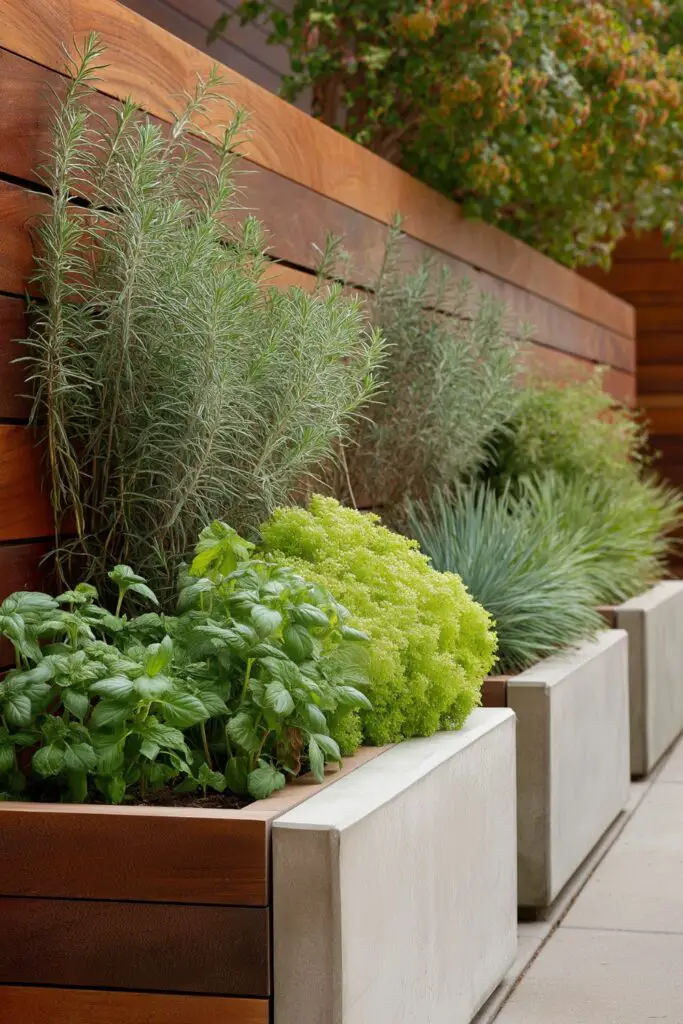
Concrete slab planters are a practical and stylish way to structure your garden and add visual interest. These raised beds work well along fences, patios, or even in place of traditional borders.
You can cast these planters on-site using plywood molds and reinforcement wire. Consider customizing their size to suit your space—long and low for herbs, tall and narrow for privacy plants. Smooth the finish or leave it textured for an industrial look.
Concrete planters are especially useful in drought-prone areas, as they retain moisture better than plastic or wood.
Raised Planter Build Breakdown
| Step | Description |
|---|---|
| 1 | Design molds using plywood with internal braces |
| 2 | Pour concrete and reinforce with rebar or mesh |
| 3 | Let cure for several days before removing mold |
| 4 | Seal the interior if using for edible plants |
| 5 | Fill with drainage layer, soil, and plants |
These planters are functional sculptural pieces that enhance your yard’s style and organization.
Create a DIY Concrete Fire Pit Surround
Adding a fire pit to your yard creates an instant gathering spot—and a concrete surround adds a sophisticated touch. Whether you build a round pit with poured concrete or frame a square base for a metal bowl insert, the result is timeless and cozy.
Choose heat-resistant concrete mixes and consider using pre-made molds for simplicity. You can pour a circular pad or create low walls for seating or safety. Add gravel or stone filler for drainage and contrast.
This DIY project becomes a focal point for outdoor entertaining and works in all seasons.
Concrete Fire Pit Design Guide
| Feature | Option |
|---|---|
| Shape | Round, square, or hexagonal |
| Height | Flush with ground or 12–18” raised edge |
| Material | Heat-resistant concrete or refractory cement |
| Extras | Integrated seating, lighting, or planter walls |
| Surface | Smooth or rustic with exposed aggregate |
It’s both beautiful and practical, giving your outdoor area a glowing centerpiece.
Stencil or Stamp Your Concrete for Decorative Appeal
Plain concrete is functional, but decorative concrete opens up a world of design possibilities. Using stamps or stencils, you can imprint patterns and textures onto your slabs—mimicking everything from cobblestone to wood grain.
Stenciling is typically done with paper or plastic templates laid over freshly poured concrete. As the concrete sets, color hardener or release agents are added to enhance the design. Stamping requires rubber mats that press patterns directly into the surface before it fully cures.
This technique allows you to personalize patios, walkways, or accent slabs in a way that feels artisanal and high-end without the cost of imported stone.
Stamped vs. Stenciled Concrete Comparison
| Feature | Stamped Concrete | Stenciled Concrete |
|---|---|---|
| Texture | Deep, 3D imprint | Surface-level pattern |
| Tools | Rubber stamps | Paper/plastic templates |
| Skill Level | Moderate to high | Beginner to moderate |
| Cost | Moderate | Lower |
| Ideal For | Patios, pool decks | Decorative borders, accent slabs |
Tips: Choose patterns that complement your home’s architecture. For example, herringbone for classic homes, wood grain for rustic styles, or geometric tile for modern builds.
Stamped and stenciled concrete can completely elevate a DIY slab from basic to beautiful.
Use Colored Concrete to Add Personality
Who says concrete has to be gray? One of the most underrated DIY techniques is using color to give your slab a custom look. From earthy terracottas to deep charcoals or soft pastels, colored concrete adds instant curb appeal and personality.
There are a few ways to add color:
- Integral Color: Pigment is mixed directly into the wet concrete for consistent tone.
- Acid Stain: Produces a variegated, marble-like effect that reacts with the minerals in concrete.
- Water-Based Dye: Allows for more control and can be layered for dimension.
Use color strategically—perhaps just for stepping stones, planter bases, or borders—to create contrast or coordinate with your home exterior.
Color Technique Comparison
| Method | Effect | Durability |
|---|---|---|
| Integral Color | Solid throughout | High |
| Acid Stain | Mottled, organic | High but unpredictable |
| Dye | Bright, bold hues | Moderate (seal for longevity) |
Color can be subtle or bold, depending on your palette. Match tones with your siding, brick, or outdoor furniture to create a cohesive look.
Colored concrete slabs allow for expressive yet practical design—perfect for modern outdoor makeovers.
Conclusion
Concrete may be humble in origin, but in the hands of a creative DIYer, it becomes a foundation for artful, functional outdoor spaces. Whether you’re crafting a modern patio, a charming garden path, or decorative planters, concrete slabs provide durability, style, and endless customization potential.
The key lies in design intention—choosing shapes, textures, and colors that suit your lifestyle and your home’s aesthetic. With a little planning and some elbow grease, you can turn plain concrete into a statement feature that elevates your outdoor living experience.
So as you plan your next backyard project, remember that the most versatile material underfoot may also be the most beautiful when you make it your own.
